Lobsters are large marine crustaceans that live in the oceans of Earth. They have a hard exoskeleton, which protects their bodies from predators.
Lobsters are found in all the tropics and subarctic regions but prefer shallow waters over deep seas. They live in crevices or burrows on rocky or coral seabeds or under rocks on sandy or muddy bottoms. Lobsters eat clams and other crustaceans, mollusks such as oysters and mussels, small fish, and occasionally dead animals on the seafloor.
Lobsters can grow up to 3.6 feet (1.1 meters) long and weigh up to 44 pounds. They shed their shells several times as they grow larger. Each time they do this, they have to take time out from eating to rebuild their shells with new calcite crystals secreted by glands in their abdomen.
The Largest Lobster Ever Caught in New York Waters
The largest lobster ever caught in New York waters weighed 22 pounds (9.98 kilograms). It was captured in Hempstead in 1997 and christened “Louie, the Lobster.”
You wouldn’t consider Louie a lucky find since he had lived at Peter’s Clam Bar restaurant in Hempstead for over two decades.
Butch Yamali, the restaurant’s owner, released Louie from captivity in 2017 after a customer offered $1,000 to eat him on Father’s Day. Yamali even went ahead to invite town officials to this special ceremony.
Despite being captive for a long time, lobster conservationists were optimistic that Louie would survive in the wild because a big, old lobster like Louie can’t attract many predators.

©OSDG/Shutterstock.com
The Largest Lobster Ever Caught Worldwide
The North Atlantic lobster holds the title of the largest ever in the world. It was captured in Nova Scotia in 1997 and weighed 44 pounds and 6 ounces. The lobster is believed to be 100 years old.
The Anatomy of a Lobster
The anatomy of a lobster is quite interesting. They have a lot of different organs and parts that make them what they are. This section will discuss some of the organs and parts.
The Abdomen
The primary function of the abdomen is to help propel the lobster through the water. The lobster also uses its tail for defense against predators and mating.
The abdomen comprises several pairs of appendages, including swimmerets and pleopods. These structures let the lobster swim more efficiently through the water.
The swimmerets are located on both sides of the abdominal segment closest to the head. The pleopods are located on segments farther back on each side of the body.
The pleopods are used for swimming but also serve as reproductive organs for lobsters. During the mating season, male lobsters use pleopods to transfer sperm to females. A female lobster’s pleopods serve as egg receptacles after she molts into her adult form in springtime.
Carapace
The carapace is a shield-like structure that covers the lobster’s body. It comprises several segments, each with a pair of legs and antennae attached.
The carapace serves as protection for the lobster’s body and also helps to regulate water flow over the gills.
Gills
Lobsters breathe through their gills. They have five pairs of gills on either side of their head (the first three pairs are visible).
Water is drawn into the mouth and passes over these gills, where it is filtered before being released out of small holes in the second segment of each leg.
Antennae
Lobsters’ antennae are sensory organs. They are small and thin, with a pair on each side of the head. The antennae can detect chemicals in the water, as well as vibrations. They also help to identify food sources and warn the lobster if there is danger nearby.
Mouthparts
Lobsters have a pair of powerful claws that they use to kill their prey and tear it apart. They also have a couple of smaller pincers on their head, which they hold onto things and push food into their mouth.
Eyes
Lobsters have two compound eyes that give them vision across a wide range of wavelengths (from ultraviolet to infrared). This allows them to see color but not fine detail.
Lobsters cannot see well at night, but they do have some ability to detect light and dark areas in low-light conditions.
Gonads
They are the reproductive organs that produce gametes (eggs or sperm). They are present in both males and females.
In male lobsters, the gonads are located on the cephalothorax, just behind the eyes. In females, they are located inside their abdomens.
The gonads of male and female lobsters produce gametes (eggs and sperm, respectively). The female’s eggs will be released into the water and fertilized by the male’s sperm. The embryos are then carried around by their mother until they hatch out of their shells as larvae.
Different Types of Lobster
There are many different types of lobster. The most common varieties are:
- Spiny lobsters
- Reef lobsters
- Furry lobsters
- Squat lobsters
- Slipper lobsters
Let’s find out more about each lobster.
Spiny Lobsters
Spiny lobsters are the most common in the Caribbean and Florida waters. They are also known as rock lobsters or langouste in French.
The spiny lobster is generally darker than other lobsters, with a hard shell and long antennae resembling horns.
Spiny lobsters have two large claws, which they use to crush their prey. Spiny lobsters are omnivorous, meaning that they eat both plants and animals. Their diet includes crabs, clams, snails, and sea urchins.
Spiny lobsters live in shallow waters near the coast with little oceanic currents so they can easily hunt prey.
These lobsters can change their color over time depending on their environment; they will turn redder when stressed out or trying to hide from predators such as sharks or other lobsters.
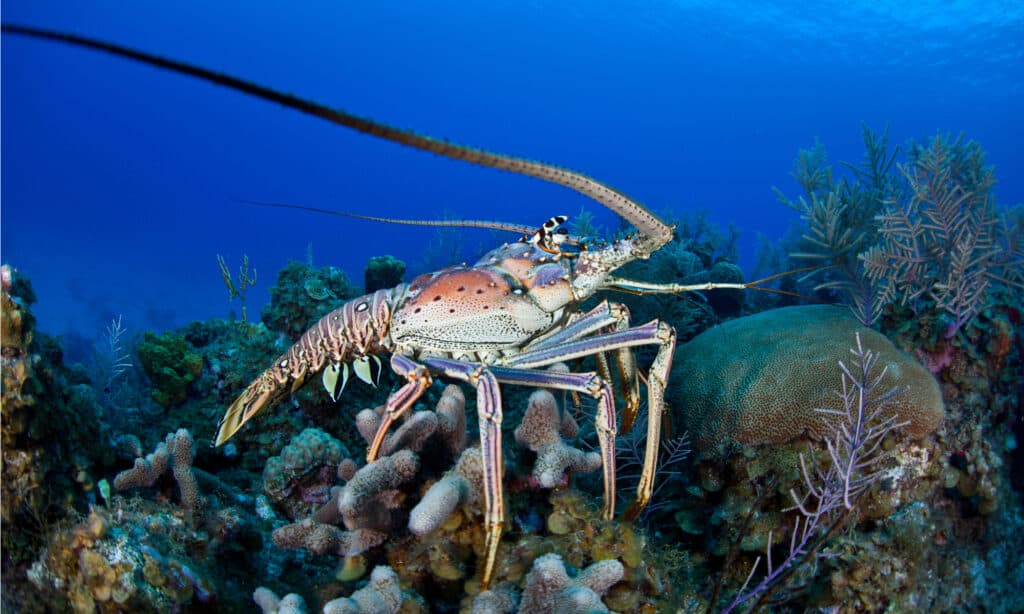
©Ethan Daniels/Shutterstock.com
Reef Lobsters
The reef lobster is a small species of lobster that lives in shallow water and can be found along the Indo-Pacific and the Atlantic Ocean. They are one of the most common lobsters that are caught commercially. Reef lobsters can grow up to 7.5cm long and are usually purple or orange.
Reef lobsters are found on hard surfaces such as rocks, reefs, and rubble, feeding on mollusks, crabs, and shrimps. They have small pincers with three pairs of legs for walking and digging.
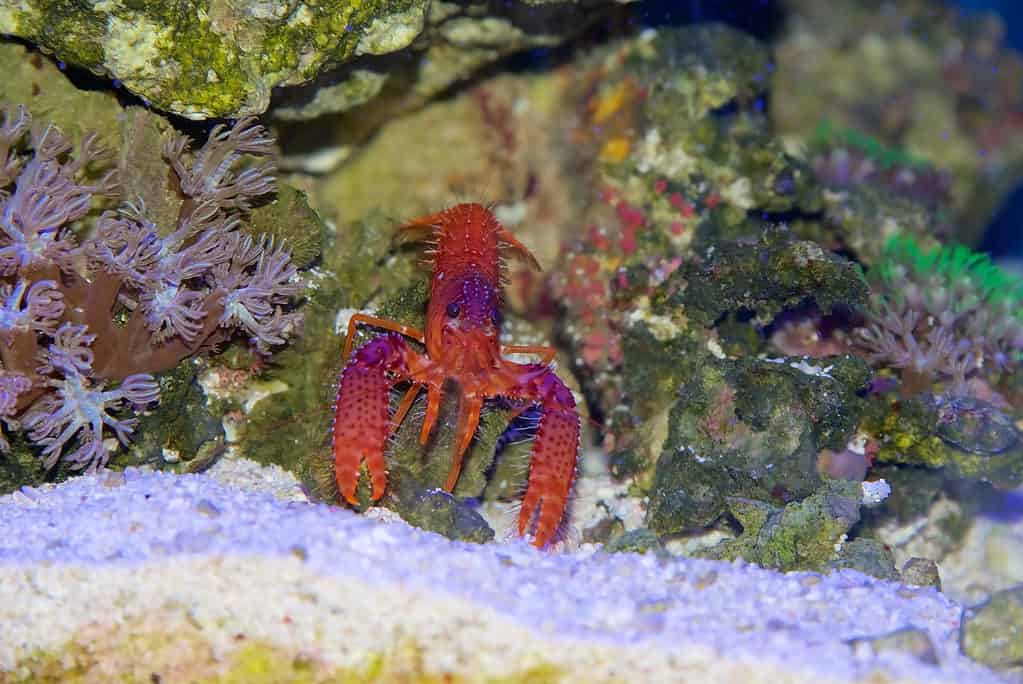
©PAUL ATKINSON/Shutterstock.com
Furry Lobster
The furry lobster got its name from the coat of bristles that covers its body, which helps it to maintain control over its environment. These bristles help protect it against predators such as fish and crabs while assisting the lobster to move more quickly through rough waters.
The hairy covering also helps to trap oxygen in moisture, enabling this creature to breathe better than other lobsters.
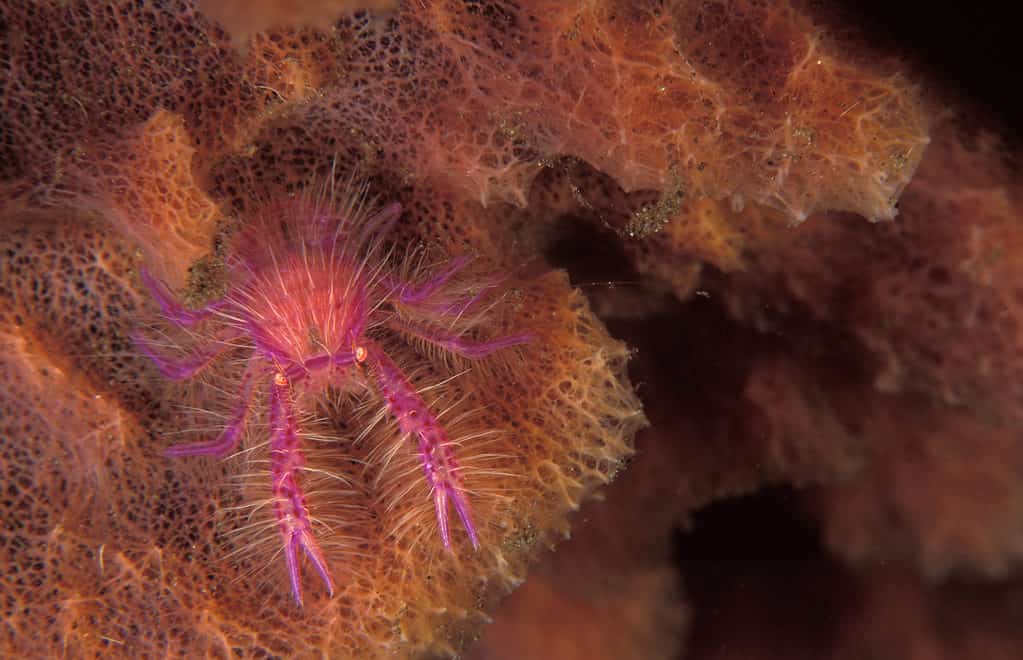
©Fiona Ayerst/Shutterstock.com
Squat Lobsters
Squat lobsters are the most common type of lobster. Their bodies are short, round, and squat. They have a hard shell that covers their body and protects it from predators. They have claws on their front legs to catch food and defend themselves against predators.
Squat lobsters can be found in all colors, including red, orange, and yellow. They live in sandy areas near the shoreline and are usually not more than two inches long when fully grown.
Squat lobsters are easy to catch because there are so many in shallow water where they hide during the day (but not at night).
They enter holes in rocks or sand under rocks during low tide. And because they burrow into the sand with just their eyes showing above ground level, it makes them hard for predators to spot them.
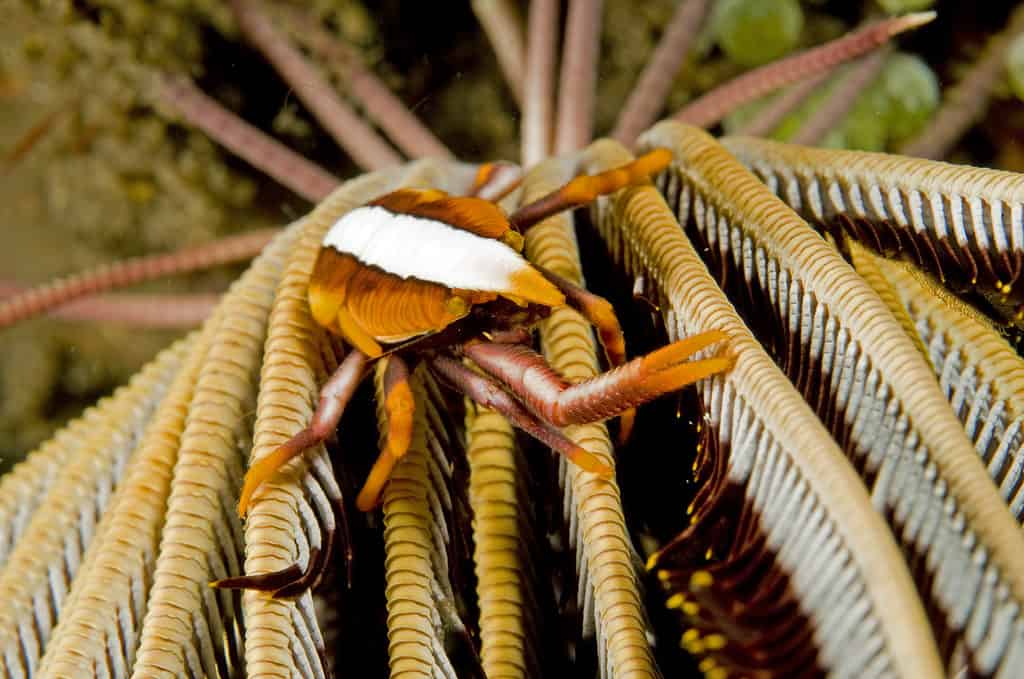
©Dray van Beeck/Shutterstock.com
Slipper Lobster
The slipper lobster has a dark brown body with white spots on its carapace. Its tail has a bright orange color and two large claws. The body length can range from 2 to 4 inches (51–102 mm).
The slipper lobster lives in shallow waters near shores, feeding on small fish and crustaceans. They tend to hide under rocks at night and come out to forage for food during the day.
Slipper lobsters are omnivores and eat almost anything they come across, including dead fish, seaweed, and algae. Unfortunately, they are also scavengers, so they eat dead animals washed up on shorelines, like crabs or other small crustaceans.
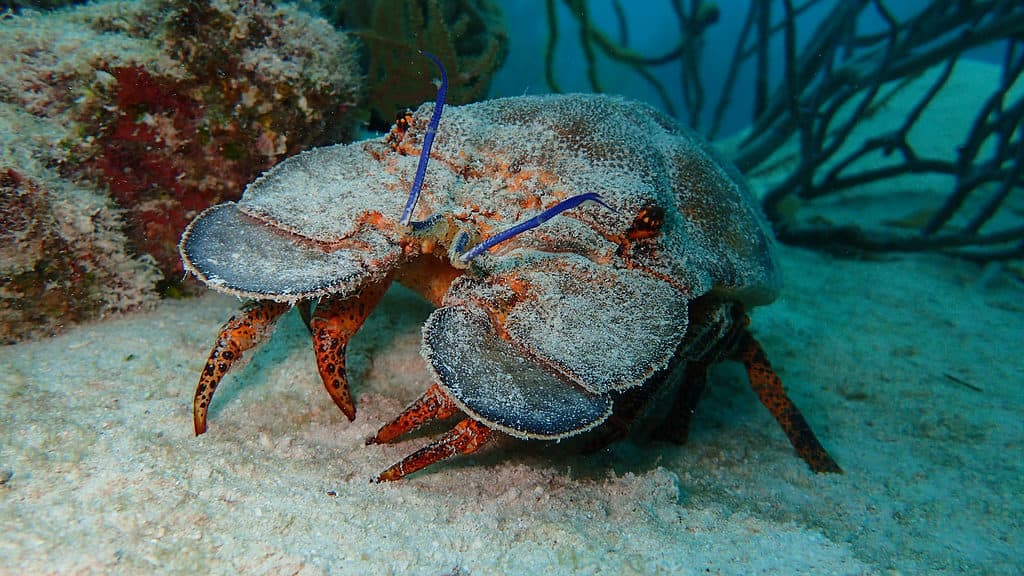
©George P Gross/Shutterstock.com
Threats That Lobsters Face
Lobsters face threats such as overfishing, climate change, pollution, and habitat loss, among others. So let’s delve into the details.
Overfishing
Overfishing is a significant threat to the lobster population. It is caused by humans, who catch more lobsters than they can eat or sell. The problem is that lobsters are slow-growing, so it takes a long time to reach sexual maturity and reproduce. As a result, if too many lobsters are taken out of the water at once, their numbers will decline significantly.
Climate Change
Climate change is a significant threat to the lobster population. The effects of climate change on lobsters are mainly felt by ocean acidification and warming waters.
Ocean acidification is a phenomenon that occurs when the oceans absorb carbon dioxide from the atmosphere, making them more acidic. This negatively impacts marine organisms, including corals and shellfish, since they use calcium carbonate for building their skeletons and shells.
The acidity of seawater also affects its ability to support life. For example, this can affect the growth and development of lobsters and their nervous systems, inhibiting their ability to detect predators or prey.
Pollution
Lobsters are extremely sensitive to water quality changes, and pollution can dramatically impact their health and survival. The most common pollutants that affect lobsters include:
- Oil spills. Oil spills can devastate lobster populations, as they will often kill young animals or prevent them from swimming or breathing properly. Oil spills also cause problems for adult lobsters as they can damage their shells and make them more susceptible to disease.
- Chemical pollution. Chemicals such as mercury can build up in lobsters’ bodies over time and cause severe damage. These chemicals come from industrial facilities, sewage plants, and other sources.
- Sedimentation. Sedimentation occurs when silt is deposited on the sea floor around reefs, creating anoxic (low oxygen) conditions for organisms living there. This causes problems for lobsters because it limits their ability to move freely. It also interferes with breeding grounds for young lobsters if there are no rocks nearby for them to hide under during this period of high vulnerability.
Habitat Loss
Lobsters need shelters to hide from predators and to lay their eggs. Habitat loss can be caused by humans or natural events like hurricanes and floods.
Humans cause habitat loss by removing lobster habitats for development or construction purposes.
Hurricanes are another cause of habitat loss because they flood some ocean areas and leave other sites completely dry.
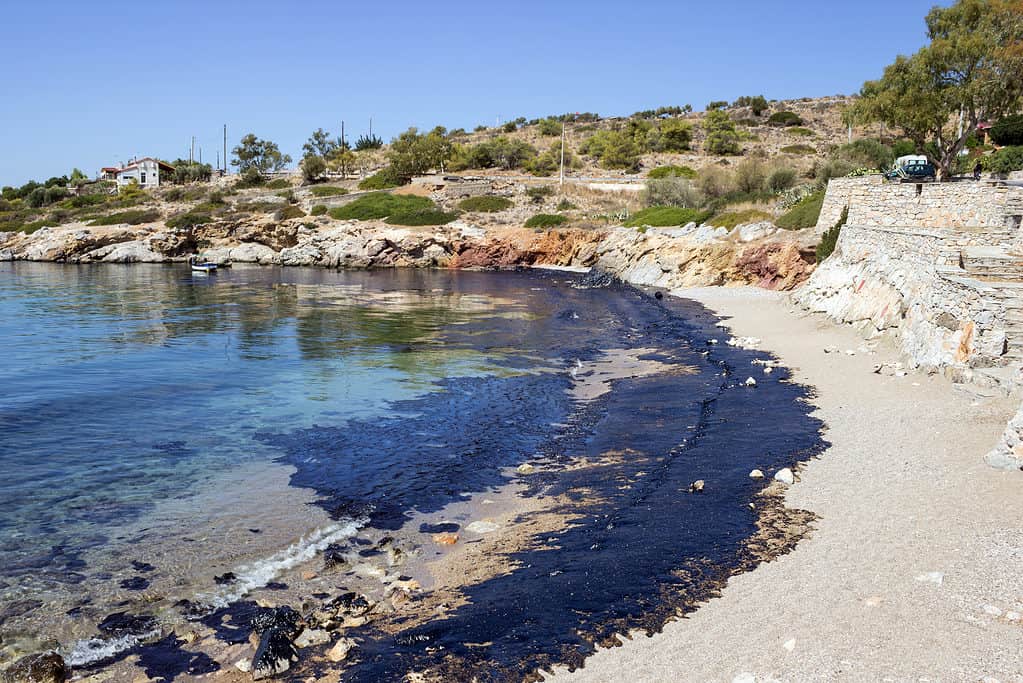
©Korelidou Mila/Shutterstock.com
Final Thoughts
Lobsters are gracious hosts to various bacteria that have medicinal applications and even produce certain drugs in their cells.
Perhaps most importantly, lobsters are the primary protein source for pets, many of which are saved from shelters and carefully socialized to make them better companions. The importance of a lobster goes far beyond the plate, and most humans can get along perfectly well without ever eating one.
Up Next
- Sea Monsters! The 10 Biggest Trophy Fish Ever Caught in New York
- The Most Snake-Infested Lakes in New York
- The 15 Deepest Lakes in the United States
The post Discover The Largest Lobster Ever Caught in New York Waters appeared first on AZ Animals.
from Animal News, Facts, Rankings, and More! - AZ Animals https://ift.tt/0hz1PGF